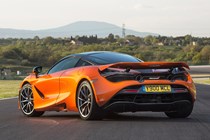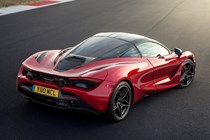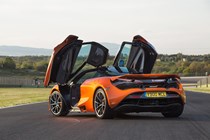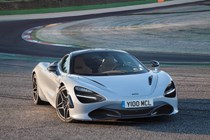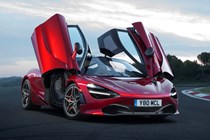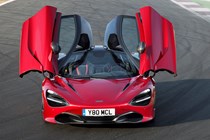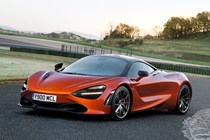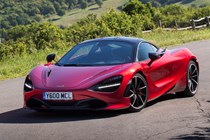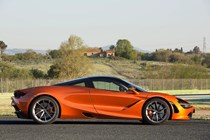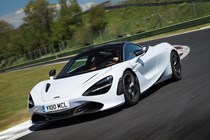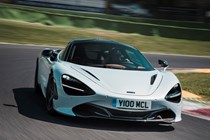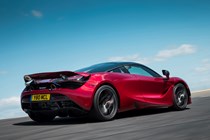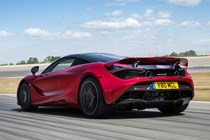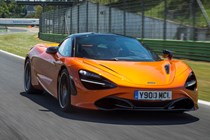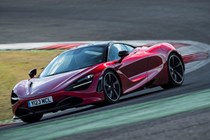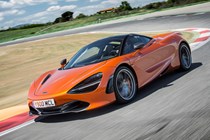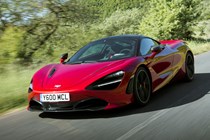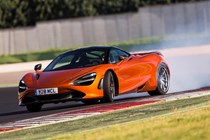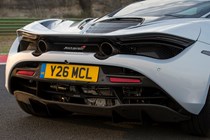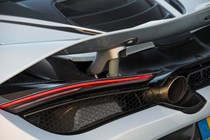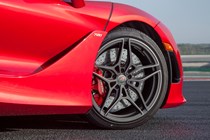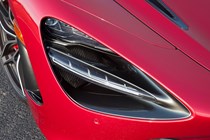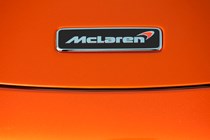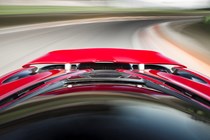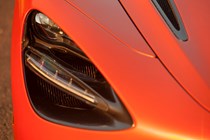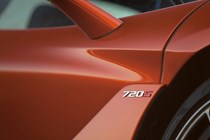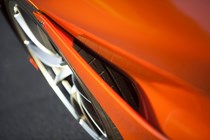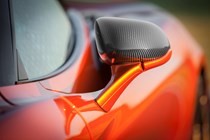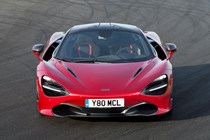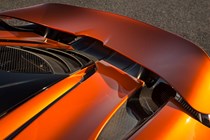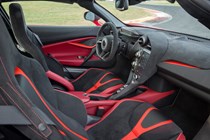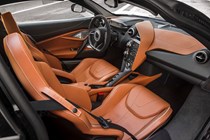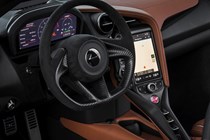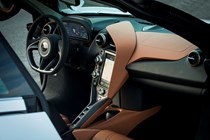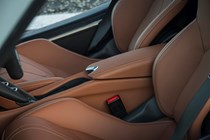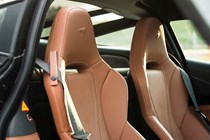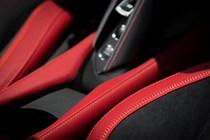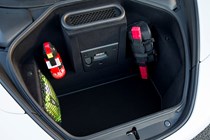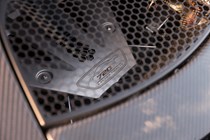McLaren 720S review
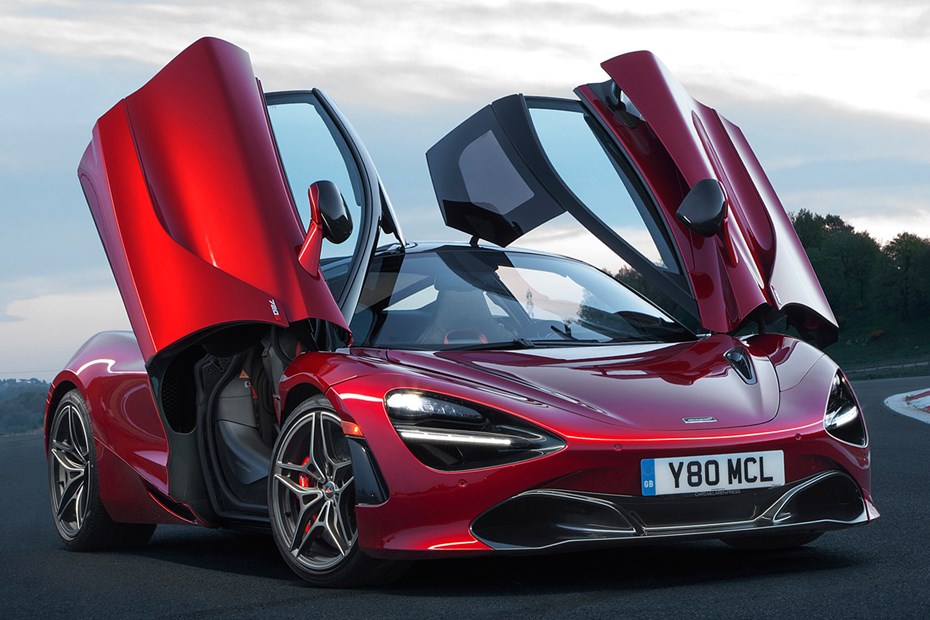
At a glance
| Price new | £228,615 - £235,515 |
|---|---|
| Used prices | £73,991 - £186,480 |
| Road tax cost | £600 |
Get an insurance quote with

|
|
| Fuel economy | 23.1 mpg |
| Range | 412 miles |
| Miles per pound | 3.4 |
| View full specs for a specific version | |
Available fuel types
Petrol
Pros & cons
- Showcases bold new McLaren design language
- Useful luggage area behind rear seats
- V8 enlarged to 4.0 litres and 720hp
- New carbon chassis allows easier access
- Excellent ride and handling from revised suspension
- Disappointingly muted exhaust note as standard
- Carbon ceramic brakes require strong legs in normal use
- Aggressive styling won’t be to all tastes
- Substantially more expensive than rivals
Overview
McLaren’s 720S Coupe is the first of a new wave of supercars from the fastest-growing British supercar manufacturer.
Replacing the 650S Coupe, the car that evolved from McLaren’s comeback performance car, the MP4-12C, the 720S heralds the second generation of offerings under its Super Series umbrella.
That means it sits in the middle of McLaren’s range, between the Sports Series models that includes the 570S, and Ultimate Series halo cars like the replacement for the P1, which is currently in development.
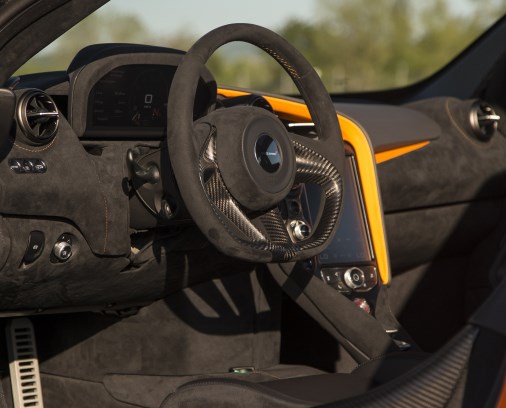
Key rivals include the Ferrari 488 and Lamborghini Huracan, but the McLaren has a couple of key advantages over both, at least for show-offs. One is the carbon chassis McLaren uses in place of the aluminium typically expected at this price point. The other is its trademark upward-opening dihedral doors.
Radical looks for the McLaren 720S Coupe
Another, depending on your taste, is a bold new design language that makes every other car in the class seem desperately conservative. Those controversial ‘eye socket’ headlamps, for instance, double as air intakes. The job of lighting the road is taken care of by a slim bar of LEDs that hovers above the chasm.
Air intakes you’d expect to see feeding the rear side-mounted radiators on a supercar are hidden behind a second door skin.
McLaren 720S Coupe is easier to live with
The result is a car that appears outrageously impractical, when in fact it’s arguably the most usable contender in its class. The new carbon chassis structure features a radically lower sill, like the 570S, meaning it’s much easier to get in and out of than the 650S ever was.
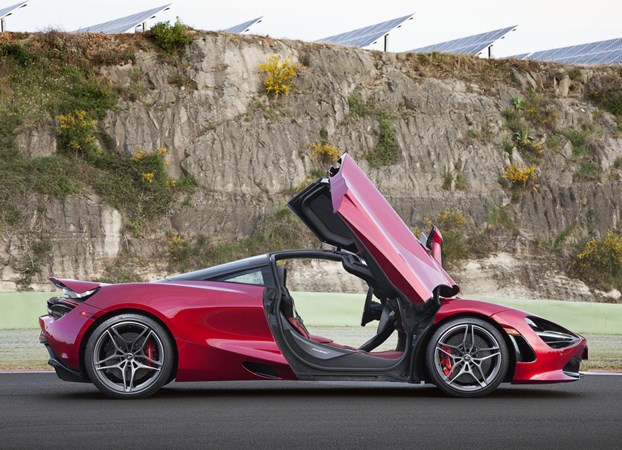
And the doors open high, but stay close to the body, requiring 155mm less room per side than before, making parking in tight spaces less difficult.
Building its case further, the 720S also manages a relatively impressive 26mpg and offers a surprising amount of luggage space, not only in the front, which is good for two aircraft cabin-sized rolling cases, but behind the seats too. Spread your cargo between the two areas and you’ve got more space than in the boot of a Ford Focus.
With its clever suspension incorporating hydraulic roll control, the 720S also rides as well as, if not better than, the mainstream Ford over all but the sharpest intrusions.
The 650S was famed for its composure too, but the newcomer’s next-generation version of the suspension system employs more sensors to help it react more quickly to changes in the road and improve comfort and handling.
Enthusiastic drivers step this way
Compared with the 650S there’s a meatier feel to the beautifully communicative steering thanks to revised front axle geometry that also massively improves stability under hard braking. Use all of the performance and you’ll be doing plenty of that.
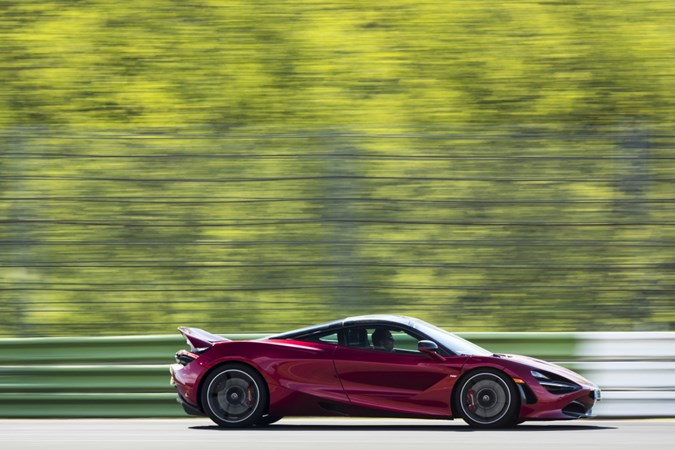
McLaren has stuck with the seven-speed dual-clutch gearbox but enlarged the twin-turbo V8 from 3.8 to 4.0 litres, pushing power from the 650hp of its predecessor to 720hp, hence the name.
Getting from rest to 62mph takes just 2.8 seconds, and 100mph requires only 7.8 seconds (compared with 3.0 and 8.3 in the rival Ferrari 488), partly because the traction is so strong, even though power is channelled solely through the rear wheels.
With so much power on tap though, there’s plenty of scope for breaking the tyres’ grip on the road, and it’s something even drivers who aren’t as well-versed in high-speed car control can experience by using the Drift Control feature.
Essentially a variable threshold ESC system, it’s adjusted by sliding your finger left and right across a graphic on the multimedia screen.



